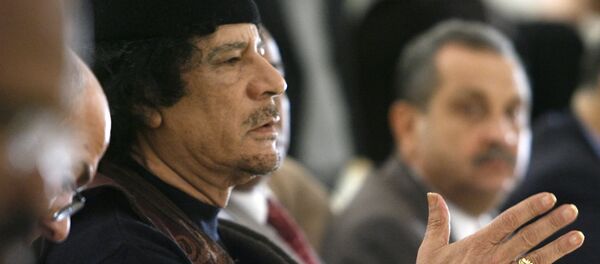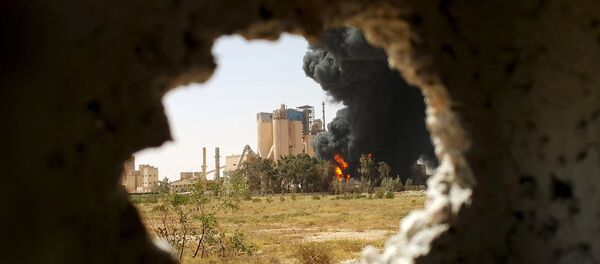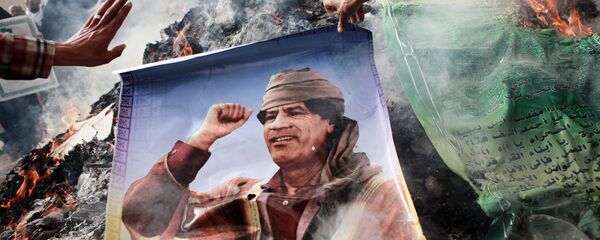Following Gaddafi's death, a power struggle erupted at state and regional levels between various clans and armed factions. The situation in the country effectively escalated into a civil war.
The resulting instability triggered the rise of numerous Islamic militant and terrorist groups, particularly Daesh, which has been carrying out attacks on Libyan oil and other infrastructure.
And also the Shura Council in Benghazi, which has pledged allegiance to Daesh and has its capital in Sirte – the very town Gaddafi was born in and where Western propaganda promised the Libyan civil war would end.
Now they are cutting off heads and chopping of hands and legs on the town’s main square under the black flag of the Islamic State (Daesh in Arabic).
A true Colonel
Muammar bin Muhammad Abu Minyar Abdel Salam bin Hamid al-Gaddafi is believed to have been born in Tripolitania, Libya, in 1942. The exact date of his birth is unknown, with many of his biographers claiming that the year of his birth is 1940.
Gaddafi himself wrote that he was born in a Bedouin tent some 20 miles south of Sirte in the spring of 1942.
As a young man Muammar Gaddafi embraced socialist ideas and, after graduating from a military academy in Benghazi, Gaddafi, now a captain, took part in a plot against King Idris I.
In a September 1969 coup, Gaddafi’s Free Officers Movement ousted the King and proclaimed the Libyan Arab Republic.
Led by Gaddafi, already promoted to Colonel, his Socialist-minded officers immediately embarked on a large-scale campaign against Western capitalism. All British and US military bases in Libya were closed down and Western oil companies, including the local branch of British Petroleum, were promptly nationalized.
Now an undisputed leader and Commander-in-Chief of the armed forces, Muammar Gaddafi vowed to root out corruption and bring about major changes in the country’s social, economic and political life.
Socialism with an Islamic face
Though a lifetime admirer of Egyptian President Gamal Abdel Nasser, who had likewise come to power in a military coup, Muammar Gaddafi devised his own theory of an Arab state – the Jamahiriya.
Jamahiriya is an Arabic term generally translated as "state of the masses". This neologism coined by Gaddafi essentially stands for a People’s Republic and is a combination of anarchist, Marxist and Islamist ideas.
In 1979, Muammar Gaddafi resigned his presidency under the pretext that he intended to work for a "continuation of the revolution.” Officially he was now titled the Leader of the Revolution.
The government used substantial oil revenues to launch a series of social reforms of unheard-of-before proportions. By the mid-1970s large-scale programs of state-subsidized housing, health care and education had already been implemented
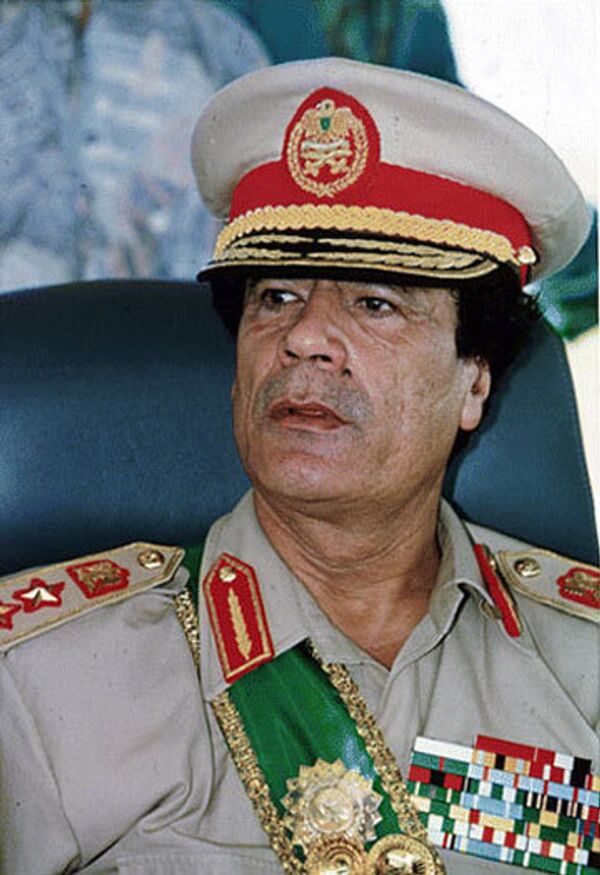
In his Green Book, which set out his political philosophy, Muammar Gaddafi proclaimed the principles of Arab socialism that successfully married Islamic dictums with the needs of everyday life allowing women to study, serve in the army and move up the social ladder.
Wary as they were of the successful Libyan Colonel, the West and conservative Arab countries had no choice left to them other than to leave him be until 2011 when the whole region flared up in the so-called Arab Spring “revolutions.”
The fall of Jamahiriya
The lasting armed conflict in Libya began in February 2011 as part of the so-called Arab Spring protests that flared up in the Libyan provinces with the people demanding the resignation of Muammar Gaddafi who had ruled the Libyan Arab Republic for over 40 years. The protests eventually grew into an armed confrontation between government forces and the opposition.
The hostilities resulted in Gaddafi's opponents imposing control over almost all of Libya. After Gaddafi lost control over the eastern part of the country, the US and its Western allies initiated a resolution by the UN Security Council that established a no-fly zone over Libya which resulted in Western airstrike on Gaddafi’s forces.
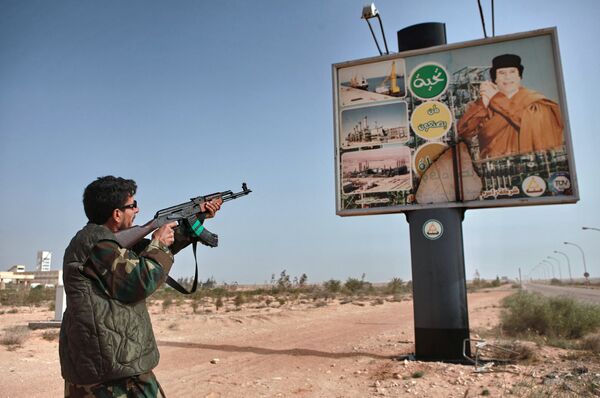
After nine months of war, which had left the capital Tripoli ransacked and a third of the country occupied by opposition and Western forces,
Muammar Gaddafi was killed in the environs of Sirte on October 20, 2011, along with his son Mutasim. Trying to slip out of encircled Sirte, his motorcade came under a NATO air attack.

Wounded Gaddafi hid inside a nearby drainage facility but his hideout was discovered by a unit of the National Transitional Council who took him prisoner. Muammar Gaddafi and Mutasim are believed to have been tortured before they were killed.
For almost four days, Gaddafi's body was publicly on display inside an industrial refrigerator in Misrata. He and his son Mutasim were buried in the desert. The location of his grave is kept secret out of fear that it may attract his supporters.
“Gaddafi wasn’t sentenced to die by a court of law, he was simply murdered. This is a crime that will hardly ever be investigated and solved," said Oleg Peresypkin, who served as Soviet ambassador to Libya during the late 1980s.
“The culprits will never be found because it was just a bunch of killers whose names are impossible to determine. But even if they find them I don’t think they will ever be tried,” Peresypkin said. He also pointed at economic considerations as the main reason behind the US’ and its Western allies’ desire to get rid of the Libyan leader.
“According to various sources, Gaddafi had around $180 billion invested in European and US securities. All this money has now been confiscated, just like all the real estate owned by the Libyan leader."
Tenth circle of Hell
With Gaddafi gone al-Qaeda and Muslim Brotherhood fighters started pouring in and in 2014 some of them pledged allegiance to Daesh. Many Libyan cities, including Sirte, remain under terrorists’ control.
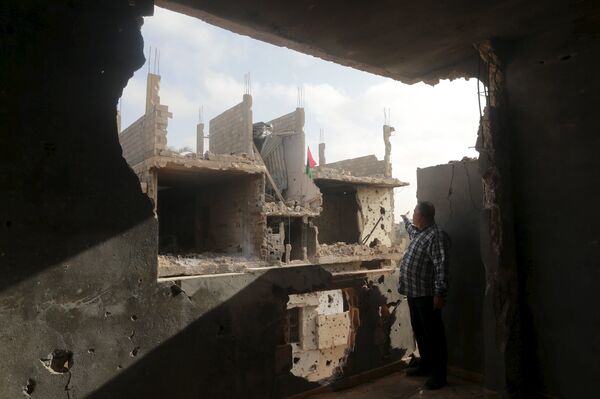
The war pushed the once prosperous country back into the Middle Ages. Trade and industry are gone, just like the social benefits once guaranteed by Gaddafi.
As a result, hundreds of thousands of Libyans and people of other countries – victims of the Arab Spring upheavals — have fled to Europe bearing out Muammar Gaddafi’s warning that the Western destruction of Libya would lead to instability in the Mediterranean and an avalanche of migrants heading to Europe.
“Europe will quickly turn black. It is us who are blocking illegal migration and ensuring stability along the 2,000 km long Libyan coast. We are checking the spread of al-Qaeda and if Libya is destabilized this will have very bad consequences for Europe and the Mediterranean. Everyone will be in danger!” Muammar Gaddafi warned during a state visit to Italy in August 2010 and on several more occasions.
Unfortunately, his words fell on deaf ears and the consequences of the Western failure to pay attention the Libyan leader’s dark prophesy have been too evident to ignore.


